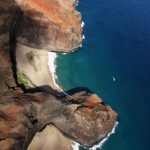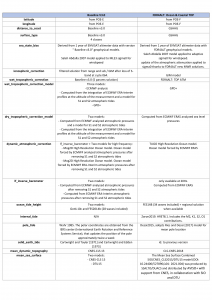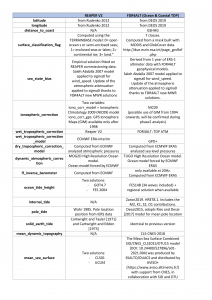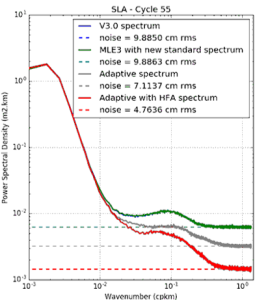
The Ocean and coastal Thematic Data products are taking into account the improvements made in the frame of the REAPER project, the CMEMS TAPAS (Tailored Altimeter Products for Assimilation) initiative, ESA Sea Level CCI, CTOH coastal products, Mean sea surface calculation. However, for some of those, ERS and Envisat data are still missing or are not seamlessly computed between ERS and Envisat.
Ocean and Coastal Thematic Data Products will propose Level 2+ 20 Hz & 1Hz global products with a common product definition associated with up-to-date algorithms. A computation of an uncertainty for each point will be included.
Data Access
Data can be downloaded here.
NetCDF groups
There are two NetCDF groups (main and expert), each of them contains two sub-groups for 1Hz data and 20Hz data

More information on the product content can be found in the FDR4ALT Product User guide (link to come at the end of the project)
Processing & Algorithms
Retracking Algorithm : Adaptive (ENVISAT), MLE3 (ERS)
Geophysical corrections for ENVISAT :

Geophysical corrections for ERS :

Editing strategy :
Improvements compared to existing products
This section contains preliminary results and does not contain all expected improvements. It will be completed and enhanced during the life of the project.
 One of the most important improvement brought by the FDR4ALT products is the application of the Adaptive retracker on ENVISAT :
One of the most important improvement brought by the FDR4ALT products is the application of the Adaptive retracker on ENVISAT :
Validation Results already show improvements compared to previous ENVISAT products : The Adaptive retracker improves the SSH short scale content by reducing the PSD energy. The 20Hz noise reduction is close to 18% compared to the MLE3 from the V3.0 ENVISAT reprocessing. By adding a dedicated HFA method, the noise reduction is up to 50% compared to the V3.0.
The Ocean & Coastal TDP uses a dedicated processing for the coastal areas.
Regional tides have been provided by Noveltis
Geophysical corrections have been updated with current standards and directly at 20Hz, allowing a better 20Hz resolution.
Uncertainties have be computed for each point at 3 different scales (shorts, meso, large).
The orbit have been updated to the POE-F version.
People in charge :
CLS : hroinard@groupcls.com, fpiras@groupcls.com
LEGOS : fernando.nino@ird.fr
Documentation :
Benefits of the Adaptive Algorithm for Retracking Altimeter Nadir Echoes: Results From Simulations and CFOSAT/SWIM Observations (https://ieeexplore.ieee.org/abstract/document/9385074)